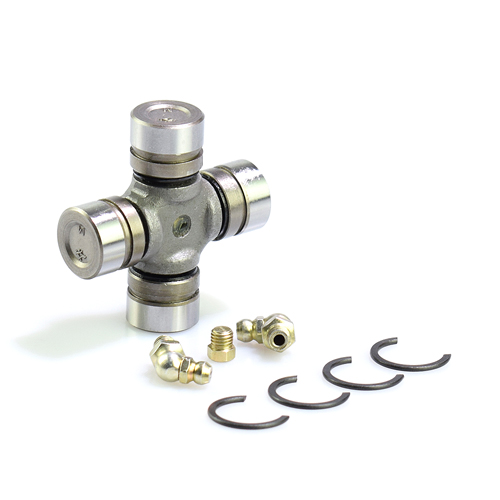When you think about a vehicle’s anatomy, you might imagine the gleaming hood, the intricate dashboard, or even the finely-tuned engine purring like a contented cat. However, lurking below the surface, well out of the spotlight, is a critical yet often overlooked element: the drivetrain. At the heart of this complex assembly lie two essential components—the drive shaft and the universal joint (U-joint). Imagine them as the unsung heroes of the transportation world, tirelessly working in tandem to ensure power flows smoothly from the engine to the wheels.
The drive shaft is akin to a long, finely-crafted baton passed along a relay team. Its primary job is to transfer torque from the engine, through the transmission, to the axles and wheels. Acting as the connective tissue in a vehicle, the drive shaft plays a significant role in propelling the vehicle forward. Made from materials like steel or aluminum, it must be both strong and lightweight, enabling it to withstand immense forces while maintaining agility on the road.
Now, let’s delve deeper into this remarkable component. Drive shafts typically come in two configurations: the one-piece and the two-piece. A one-piece drive shaft is generally used in smaller vehicles where space restrictions are minimal. It’s a sleek linear design that promotes efficiency and simplicity. In contrast, the two-piece drive shaft involves a midpoint support bearing, making it a popular choice for larger vehicles or those needing to navigate rough terrain. Think of it as a snake coiling and uncoiling—flexible yet potent enough to tackle the rigors of the road.
As we traverse the landscape of automotive engineering, we also encounter the universal joint, or U-joint, which acts as the flexible hinge connecting the drive shaft to the axles. This critical component allows for the drive shaft to accommodate the up-and-down movement of the suspension while maintaining an uninterrupted flow of power. Without the U-joint, the performance of a vehicle would be akin to a symphony missing its conductor—chaotic and disorganized.
U-joints come in various designs, the most common being the cross and roller style. Each design serves a unique purpose, accommodating different types of drivetrains and applications. The cross type, characterized by its X-shaped configuration, is particularly popular in standard vehicles due to its reliability and robustness. The roller type, often used in high-performance vehicles, provides an extra layer of durability, standing up admirably against intense stress and heat. They may be small in stature, but U-joints are true powerhouses, ensuring the vehicle runs smoothly even under duress.
A fascinating aspect of drive shafts and U-joints is their adaptability to different driving conditions. For instance, in off-road scenarios, where jarring bumps and inclines are part and parcel of the experience, these components need to exhibit extreme flexibility. Think of them as seasoned dancers, gracefully adapting to the rhythm of the terrain, offering smooth transitions to the driver without missing a beat.
Maintaining the integrity of your drive shaft and U-joint is paramount for vehicle longevity. Wear and tear can lead to vibrations, noise, and even catastrophic failure if not addressed. Regular inspections should be a part of any vehicle’s care regimen, akin to a routine health check-up, ensuring that all parts are functioning harmoniously. Greasing the U-joints, for example, can help stave off friction and prolong their life, much like oiling the gears in a finely-crafted watch.
In an age of burgeoning technology, we find that advancements have been made concerning drive shafts and U-joint designs. The rise of carbon fiber drive shafts exemplifies innovation in automotive engineering. These shafts offer lower weight and increased strength compared to their traditional steel counterparts. Imagine trading in a heavy rock for a feather – the difference in efficiency even at high speeds is profound. Manufacturers are also exploring extreme-duty U-joints designed for racing and heavy-duty applications, ensuring that these indispensable parts can endure even the most demanding conditions.
Moreover, consider the emergence of CV joints or constant velocity joints in front-wheel drive vehicles. CV joints are specialized types of U-joints that offer a more fluid power transfer at varying angles. Their smooth performance, much like a well-orchestrated ballet, distinguishes them in specialized applications. A escapist escape from conventional mechanics, they excel in keeping vehicles nimble, particularly those navigating urban jungles.
As we conclude this exploration into the realm of drive shafts and U-joints, it becomes readily apparent that they serve as the backbone of the vehicle’s drivetrain. They are the silent guardians of performance and power transmission, ensuring that every rev of the engine translates into movement. By nurturing and understanding these components, vehicle owners can enhance their driving experience while prolonging the life of their car. Thus, the next time you hit the road, take a moment to appreciate the unsung elegance of your drivetrain—the drive shaft and U-joint working in perfect harmony to make your journey possible.
